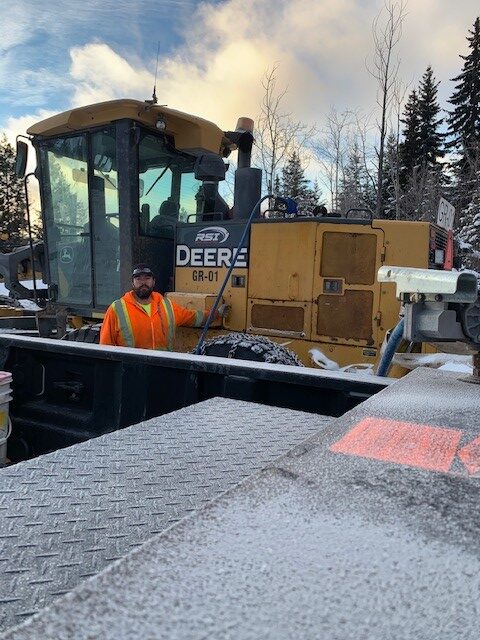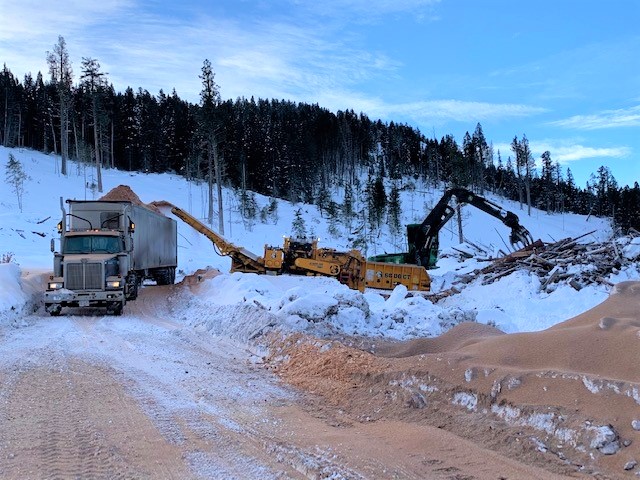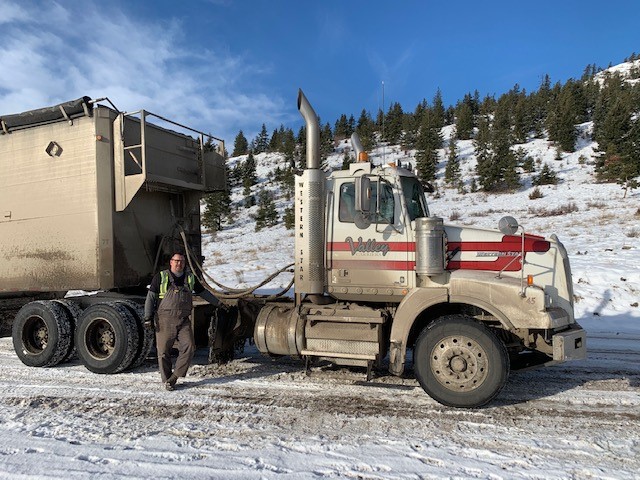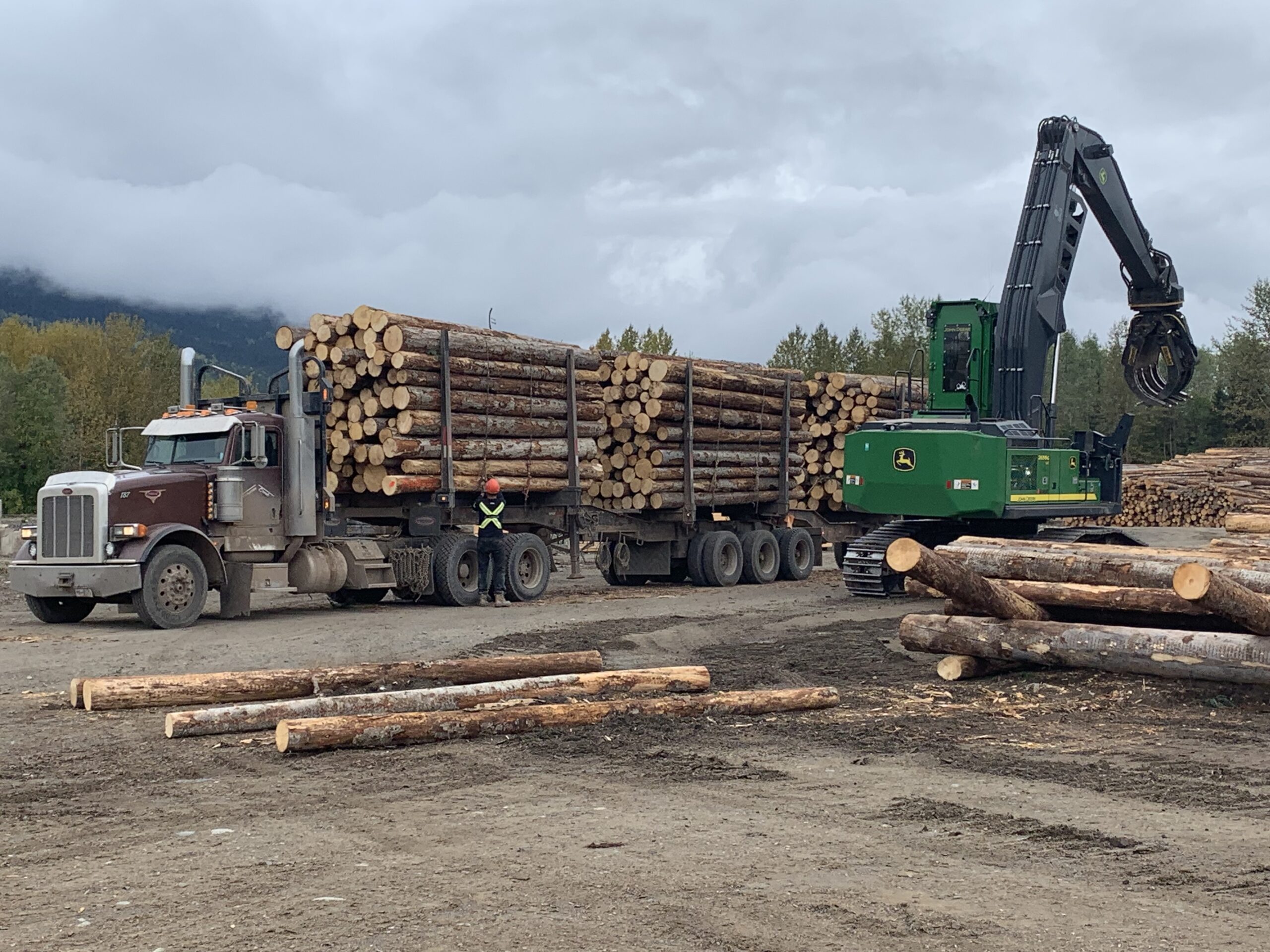Clearwater, B.C.: Many areas of B.C. are facing the challenge of a shortage of wood fibre that was more plentiful just a few years ago. Today, with many of the damaged mountain pine beetle stands harvested, wildfires and other factors, the scarcity of wood fibre supply has led the forestry sector to find innovative and collaborative ways to utilize the fibre that was previously piled and burned.
A project in the Wells Gray Community Forest (WGCF) in Clearwater, funded by the Forest Enhancement Society of BC (FESBC), has meant a homecoming for Greg Kilba, Division Manager Portable Wood Processing and Log Buying of Arrow Transportation Systems Inc. (Arrow), who grew up in the community and spent time raising his family there, too.
“Clearwater is a pristine and beautiful area I have many fond memories of and the Wells Gray Community Forest is a gem for the community,” said Kilba, now based in Kamloops. “When our team at Arrow first looked at a fibre utilization project in the Community Forest, there were many challenges – wet ground and large road ditches. There was a lot of fibre that could not be utilized by sawmills because of the amount of rotten wood typical of this type of stand. The Community Forest group’s goal was to log four cut blocks to help get a healthy stand of trees growing again. Together, we figured we could make economic sense of the project if we applied to FESBC for a grant. With the good news of an approval of a grant for $720,748, we developed a project plan for approximately $307,000 for the Wells Gray Community Forest, then got to work.”
Greg, his son Benton, his father Mike, and the rest of the Arrow team went back to the blocks in mid-October, taking the residual wood left over from earlier logging operations and ground it into hog fuel. Because of the planning of the project prior to harvesting, the WGCF was able to work with the logging contractors to build more accessible road systems to ensure Arrow’s grinder and trucks could access the slash piles.
“It was amazing to see trucks in the forest hauling out fibre,” said Kilba. “Early in my forestry career, I had contracts to burn slash piles like this. We would light up the piles and there was an amazing amount of energy coming from them. I had always wondered how we could harness that energy instead of wasting it. With the introduction of boilers that use this wood fibre, we now take this fibre we once burned and use it to create electricity. The grant from FESBC made it economically feasible to haul the material. Without this funding, piles of fibre would have otherwise been burned on site.”
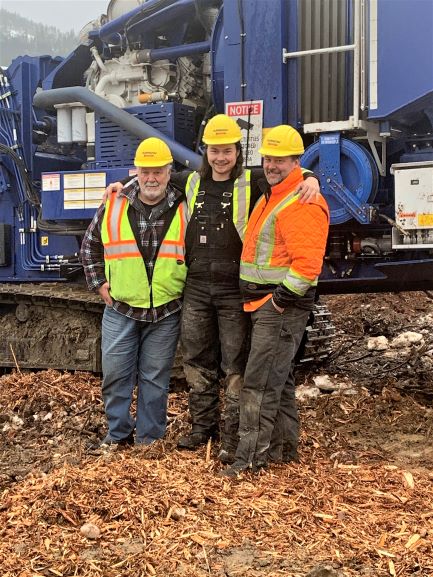
In total, Arrow ground 18,992 cubic metres of wood fibre, translating roughly to 350 logging trucks worth of wood fibre. The ground-up fibre was then transported to Domtar in Kamloops to generate electricity to run operations, with additional green energy being put back to the grid. The grinding project not only created an estimated 600 person days of work, or close to 5,000 employable hours, but by avoiding the burning of slash piles, the Clearwater airshed was spared smoke from fires, something George Brcko, WGCF General Manager, and many Clearwater residents appreciate.
“As a Community Forest, we can be nimble and innovative in finding ways to be collaborative and get work done,” said Brcko. “The grinding and hauling of these residuals meant that we didn’t have smoke hanging in our valleys from burning slash. Additionally, by removing the leftover wood fibre, this means we lessen the opportunity for a catastrophic wildfire in these areas.”
“Without FESBC filling the gap financially, this project would not have happened. This kind of collaboration and support of community forests is the way of the future and I believe just the tip of the iceberg in forest stewardship as we all work to do things better.”
George Brcko, Wells Gray Community Forest, General Manager
The WGCF has been an asset to the citizens of Clearwater as revenues generated from operations flow directly back into the community. Since 2004, almost $3 million has gone back into community projects like seniors housing, summer camps for kids, and accessibility projects like multi-use pathways, a boon to the community that BC Community Forest Association’s (BCCFA) Executive Director Jennifer Gunter applauds.
“As we work to grow the bioeconomy and make our communities and forests more resilient, FESBC is providing the missing link by enabling community forests and local entrepreneurs to partner on innovative projects like this,” said Jennifer Gunter, Executive Director of the BC Community Forest Association. “By supporting the utilization of residual fibre, multiple benefits are created for the communities, the forests and the province as a whole.”
Helping to fund and oversee the project on behalf of FESBC is Operations Manager Dave Conly.
“Arrow, in partnership with Domtar, has been able to develop great solutions with our local community forests, and by using fibre that would otherwise be wasted, they are creating well-paying jobs and assisting the Province in achieving climate goals,” said Conly. “Overall, FESBC projects will have generated 5.3 million tonnes of net carbon benefits which is equivalent to removing 1.1 million cars off the road for a year. Forestry is a great way to achieve B.C.’s and Canada’s climate change targets, while at the same time create more jobs in the bioeconomy.”
“I absolutely love that Arrow found a way, in partnership with FESBC and our Community Forest, to utilize residual wood fibre or slash. Our local Forestry Working Group – a group comprised of City councilors, local government representatives and industry stakeholders – has long advocated for this kind of work to be done because of the countless benefits: the economic benefits of good paying jobs for people, the social benefits when steady employment is available and smoke is removed from our airshed, and the environmental benefits when wood fibre is optimally used to reduce our carbon footprint.”
– Merlin Blackwell, Mayor of Clearwater
This project is funded in part by the Government of Canada.

Domtar happy with results of chipping trial -sorted biomass 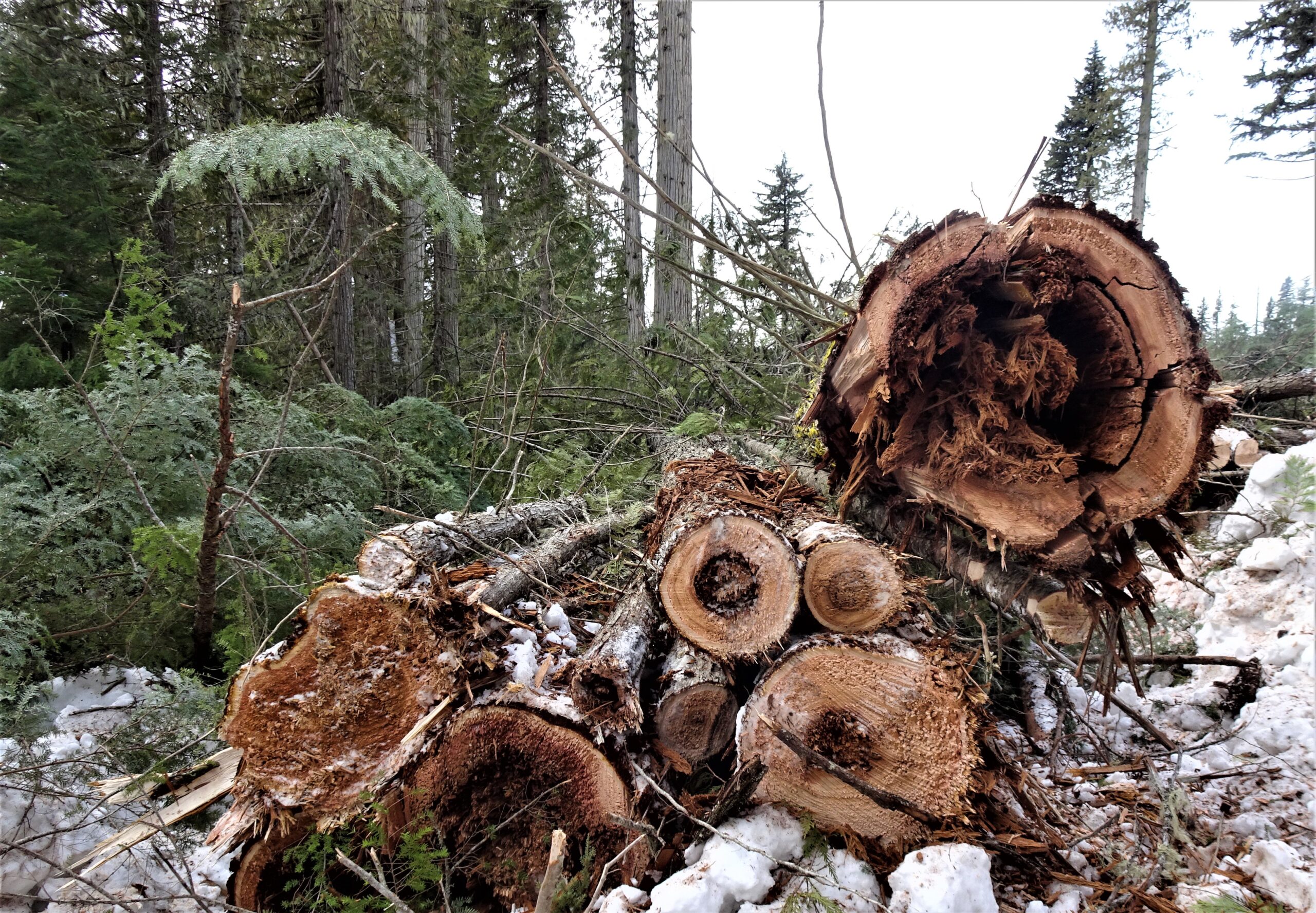
Harvested cedar & hemlock & level of decay 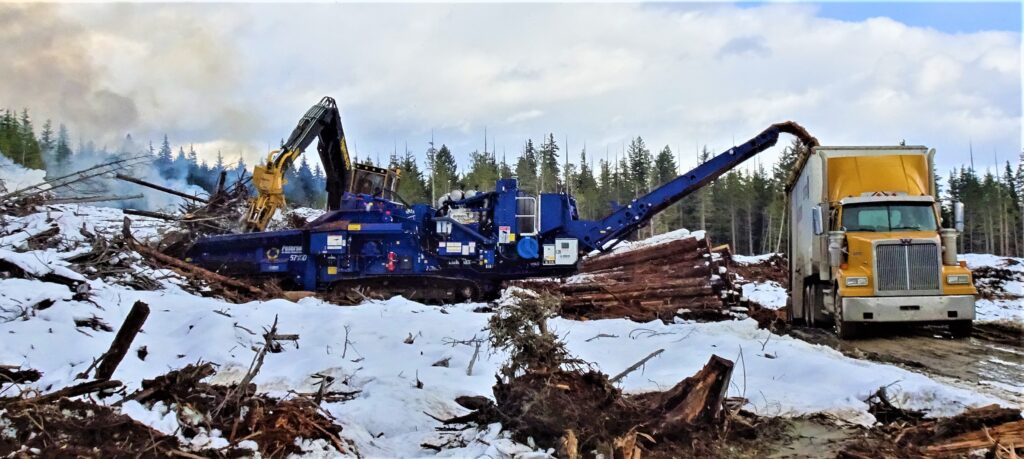
Grinding residual wood fibre – Wells Gray Community Forest – G.Brcko Photo
To arrange an interview with FESBC, Wells Gray Community Forest or Arrow contact:
Aleece Laird, Communications Liaison | communications@fesbc.ca | 250.574.0221

